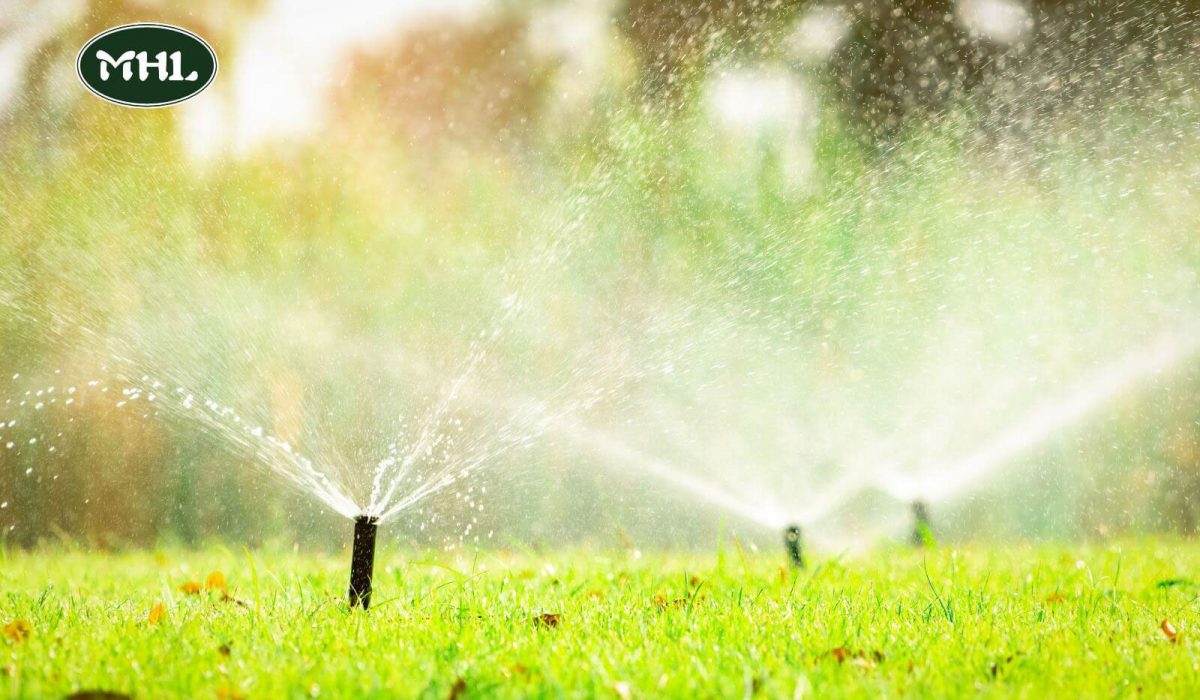How to Install a Lawn Sprinkler System: 8 Simple Steps to DYI
Are you tired of constantly moving a sprinkler around your yard? Manually moving a sprinkler or dragging a hose around often leads to uneven watering and wasted time.
Why not upgrade to a system that’s easy to install and efficient?
With the right tools and this simple DIY guide on how to install a lawn sprinkler system, you’ll have everything set up in no time, and you’ll save on labor costs. Check it now!
What is a lawn sprinkler system and how does it work?
A lawn sprinkler system is built to distribute water evenly across your lawn, making sure every part gets the right amount of hydration. It consists of many different components that you should understand before putting in a lawn sprinkler system in your garden.
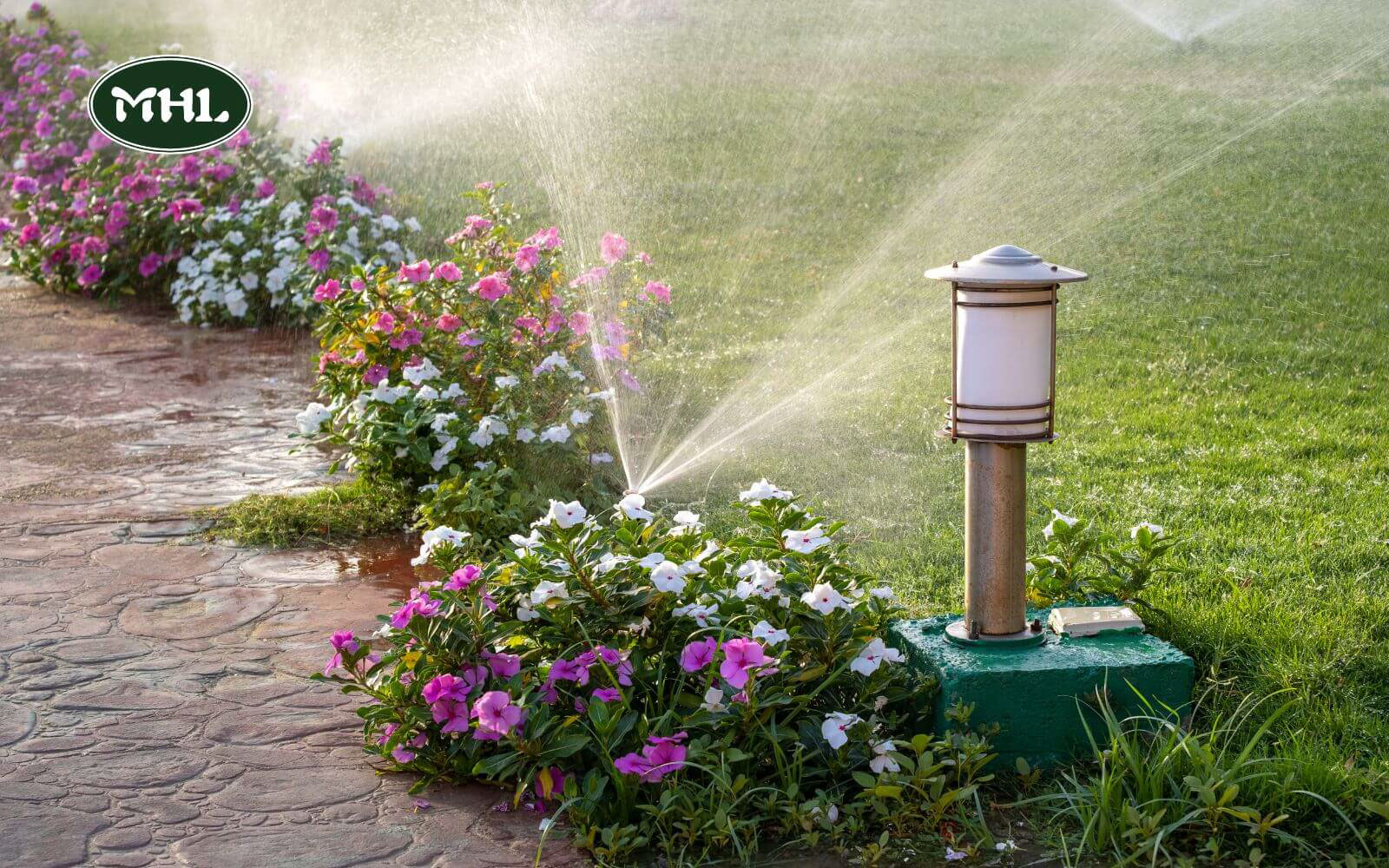
Components of a lawn sprinkler system
Here are the main components and design features of a lawn sprinkler system:
- Main line: This primary pipe is connected to your water source, drawing water for distribution throughout your yard. A single spigot may suffice if you have a small yard, but most larger lawns require additional pipes to cover the entire area.
- Pipe ramifications: These smaller pipes connect to the main pipe and supply water to different areas of your yard. They’re placed carefully to make sure every part of your lawn gets the right amount of water and should be planned well to avoid overwatering or uneven growth.
- Shut-off valves: Shut-off valves are placed in the main pipe to control water flow. The main valve completely stops water from entering the system, which is crucial in case of a leak. Without this, leaking pipes could damage your lawn.
- Backflow preventer: This is a key component that stops leftover water in your sprinkler system from flowing back into the main water supply, which could contaminate it. Installing a proper backflow preventer is essential for a safe sprinkler system, and it’s one reason why hiring a professional is often recommended.
- Sprinkler zones: Sprinkler zones are the specific areas in your yard that are watered by the connected pipes. Your contractor will plan these zones based on your yard’s size, then determine how much piping is needed to cover each area.
- Controller: This is what turns your sprinkler system on and off. If you have a more advanced system, it can be set to run on a schedule or offer additional features for better control.
- Sprinkler heads: These are the sprinkler heads that release water onto your lawn. They are placed in key spots within each sprinkler zone. It’s important to regularly check them for any damage or blockages to ensure even water distribution.
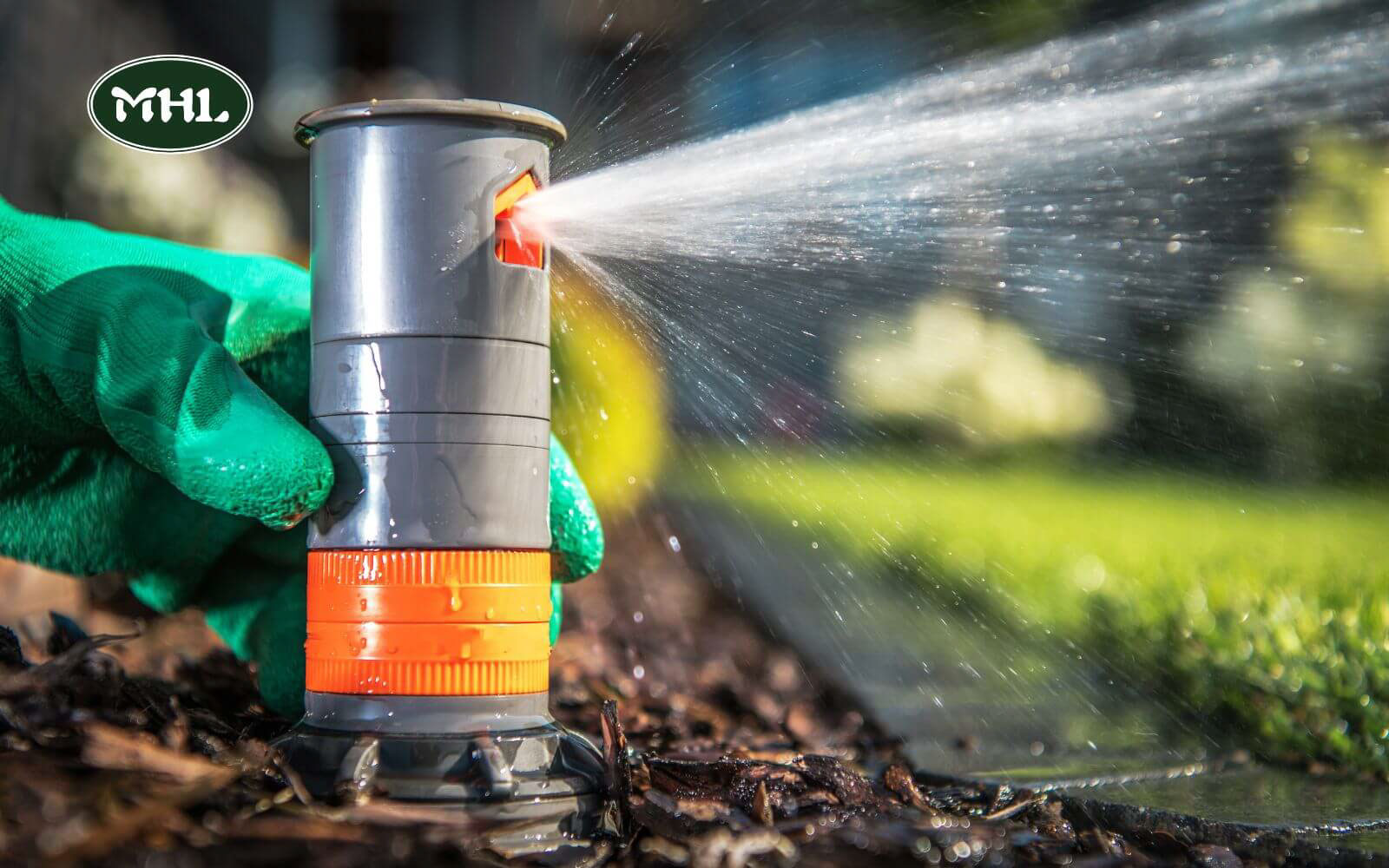
How does a lawn sprinkler system work?
Irrigation is the system of pipes that moves water around your yard. These pipes are connected to a main water source. When the system is turned on, a valve opens, allowing water to flow through the pipes and out of the sprinkler heads across your lawn, similar to how water flows through a tap.
The pipes are usually buried 6-12 inches beneath the surface, making it tricky to install neatly. This is one reason why a professional installation is often recommended to avoid damaging your lawn during the process.
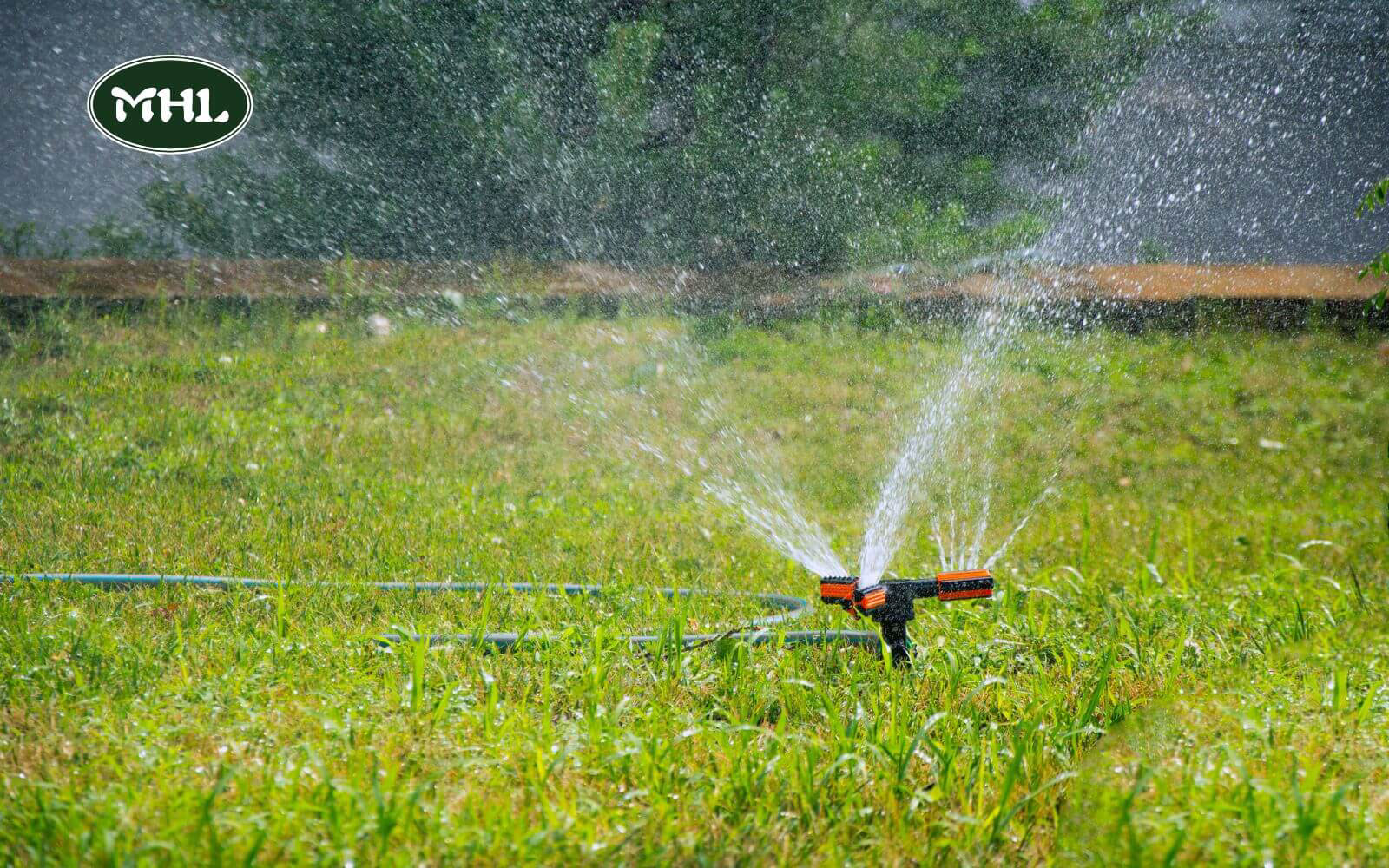
Planning a lawn sprinkler system
A lush, green lawn with healthy trees and vibrant flowers is a dream of many homeowners. And installing a lawn sprinkler system is the most efficient way to keep your yard looking great while conserving water.
Before you start your project, it’s essential to have a plan. Many sprinkler manufacturers offer custom-designed systems tailored to your yard and local climate, which will make the process smoother.
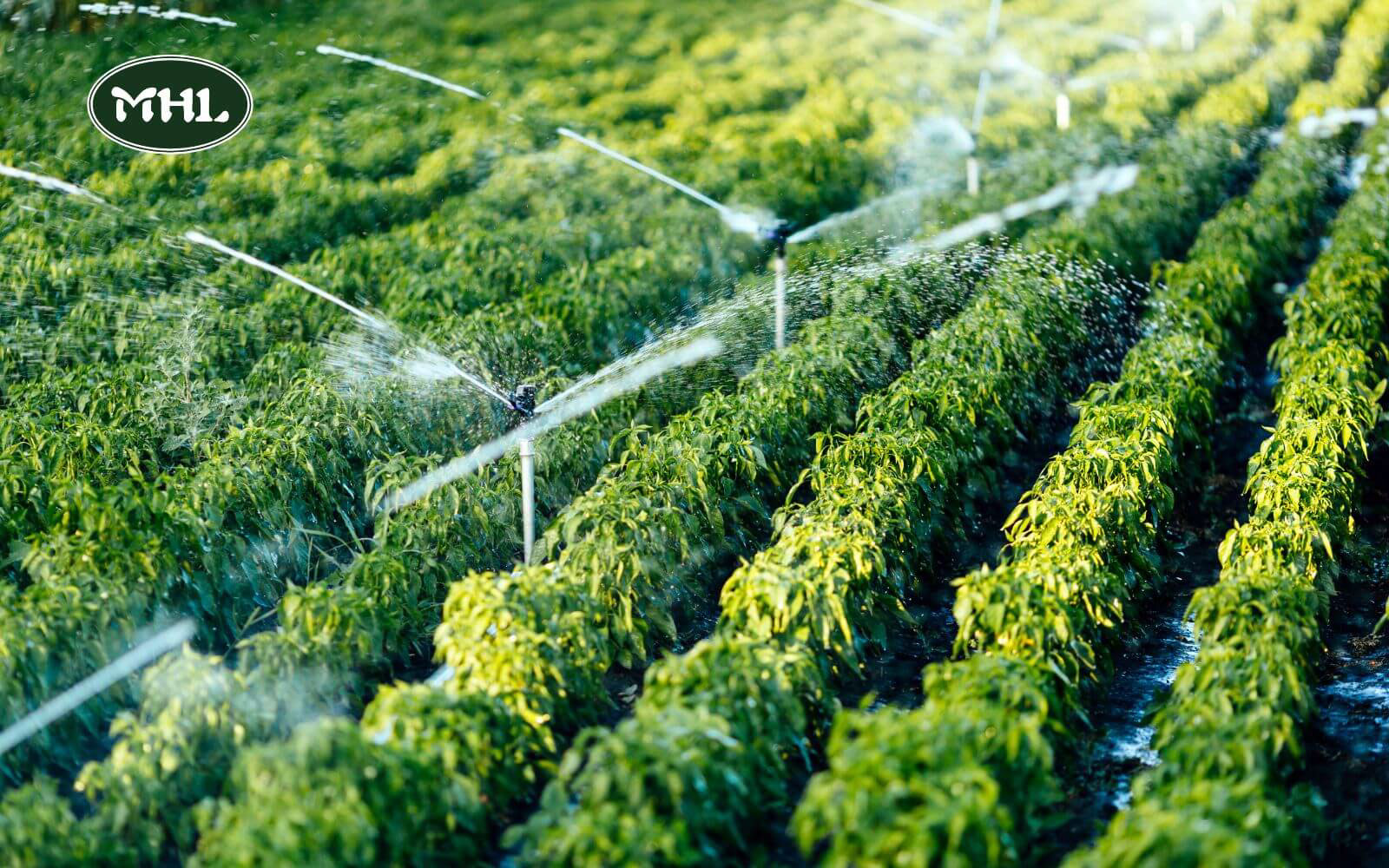
Determine the water pressure
Water pressure is measured in two ways: “working” pressure (when the water is running) and “static” pressure (when the water is off). To check your working pressure, use a pressure gauge that attaches to an outdoor faucet. Be sure to turn off all other faucets inside and outside before reading the pressure in PSI (pounds per square inch).
For a sprinkler system to work properly, you’ll typically need at least 30-35 PSI and a water flow of 10-13 GPM (gallons per minute).
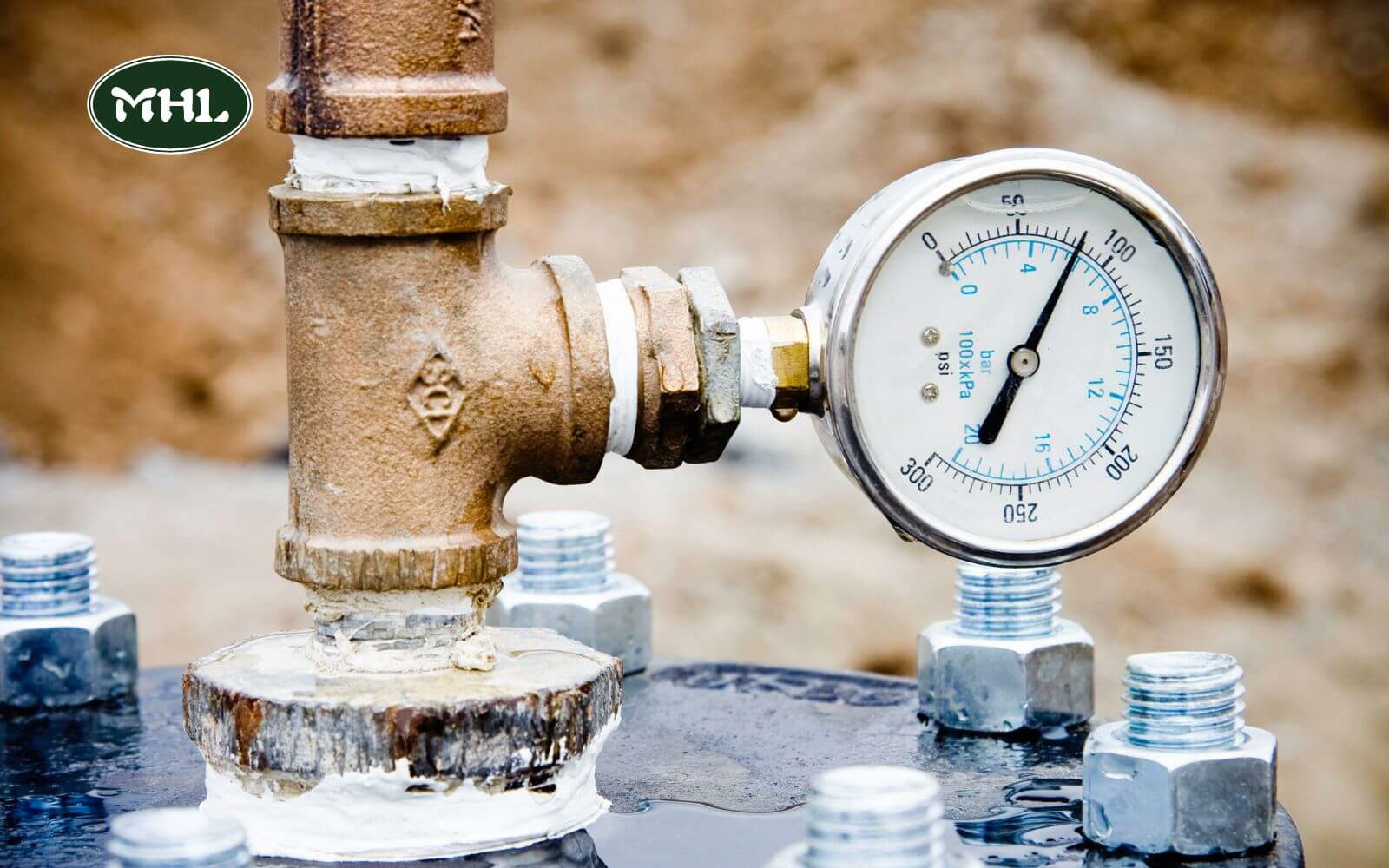
Determine the water meter size
If you’re using city water, you can find the meter size printed on the water meter itself. If you can’t locate it there, check your utility bill or call your water provider. Common sizes are 5/8 inch, 3/4 inch, or 1 inch.
If you get your water from a well or other source, you’ll need to know the pump size. You can find this in the owner’s manual or by contacting the manufacturer for help.
Determine the service line size
The pipe that connects your water meter to your house is called the service line, and it’s typically made from plastic, copper, or galvanized steel. To figure out the size of your service line, wrap a piece of string around the pipe, mark the spot where it meets, and then measure the length of the string.
Use the measurement to check the table below and find the pipe size. For instance, if your string measures 4 inches and the pipe is galvanized steel, the service line is 1 inch in diameter.
| Length of String | 2 3/4″ | 3 1/4″ | 3 1/2″ | 4″ | 4 3/8″ | 5″ |
| Size of Copper | 3/8″ | – | 1″ | – | 1 1/4″ | – |
| Size of Galvanized | – | 3/4″ | – | 1″ | – | 1 1/4″ |
| Size of Sch. 40 PVC | – | 3/4″ | – | 1″ | – | 1 1/4″ |
Determine the flow rate
To measure your water flow rate, follow these steps:
- Use your outdoor spigot to fill a container you can measure, like a gallon jug.
- Record how many seconds it takes to fill the container.
- Divide the container size (in gallons) by the time it took to fill (in seconds).
- Multiply that result by 60 to get the flow rate in gallons per minute (GPM).
- If you need the flow in gallons per hour (GPH), just multiply the GPM by 60.
Sketch the sprinkler system
Create a simple sketch of your property and jot down the measurements. Mark where trees, bushes, flower beds, and other landscaping features are. Also, include your house, garage, and any hard surfaces like patios, driveways, and sidewalks. You don’t need to be exact right now; you can refine the sketch later on graph paper.
Manufacturers can help by providing templates. After you send them a sketch of your yard, they’ll send back a detailed plan with step-by-step instructions and a shopping list of what you’ll need to get from the hardware store.
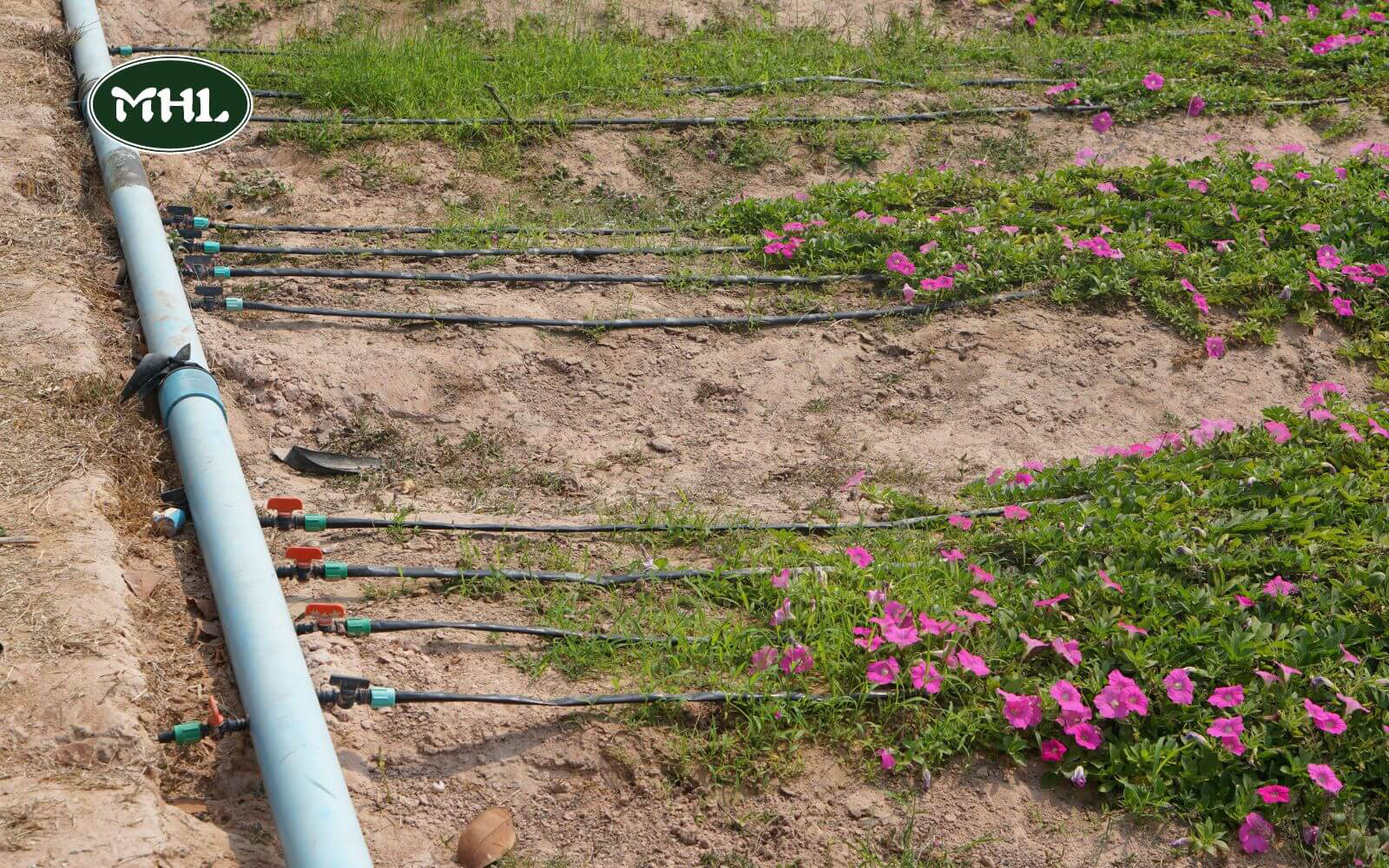
Select sprinkler heads
Now that you’ve mapped out your area you want to install a lawn sprinkler system, it’s time to choose the right sprinkler heads for each zone based on the type of plants. Here’s a simple guide to help you decide:
- Fixed spray: Ideal for smaller lawns, narrow side yards, or beds with groundcovers or shrubs. They provide a steady fan of water in a range of 45 to 360 degrees and cover 5-15 feet.
- Gear-driven: Great for medium to large lawns. These heads operate smoothly, and their spray patterns are adjustable for better coverage.
- Multiple stream: Best for uneven yards, slopes, or medium-sized areas. They slowly rotate, spraying thin streams of water up to 18-27 feet.
- Bubbler/flood: Suitable for areas around trees, planters, or hedges. They flood water at the base of plants, focusing on root zones rather than spraying leaves. Coverage is around 5 feet.
- Shrub heads: Perfect for flower beds or planters with shrubs. These heads have adjustable nozzles and can be raised to spray over the plants, offering a flexible watering pattern.
Buy supplies
After you have your irrigation map and know the details of your water system, you can start gathering the parts for your sprinkler system.
Here are the main components you’ll need:
- PVC or polyethylene pipe: These are the pipes that will carry water through the system.
- Control valves: These valves manage the flow of water to different zones in your yard.
- Risers: These connect the sprinkler heads to the pipes.
- Sprinkler heads: These spray the water onto your lawn and plants.
- Automatic timer: This allows you to set and control when your sprinklers turn on and off.
- Pipe cutter: Used to cut the pipes to the correct lengths.
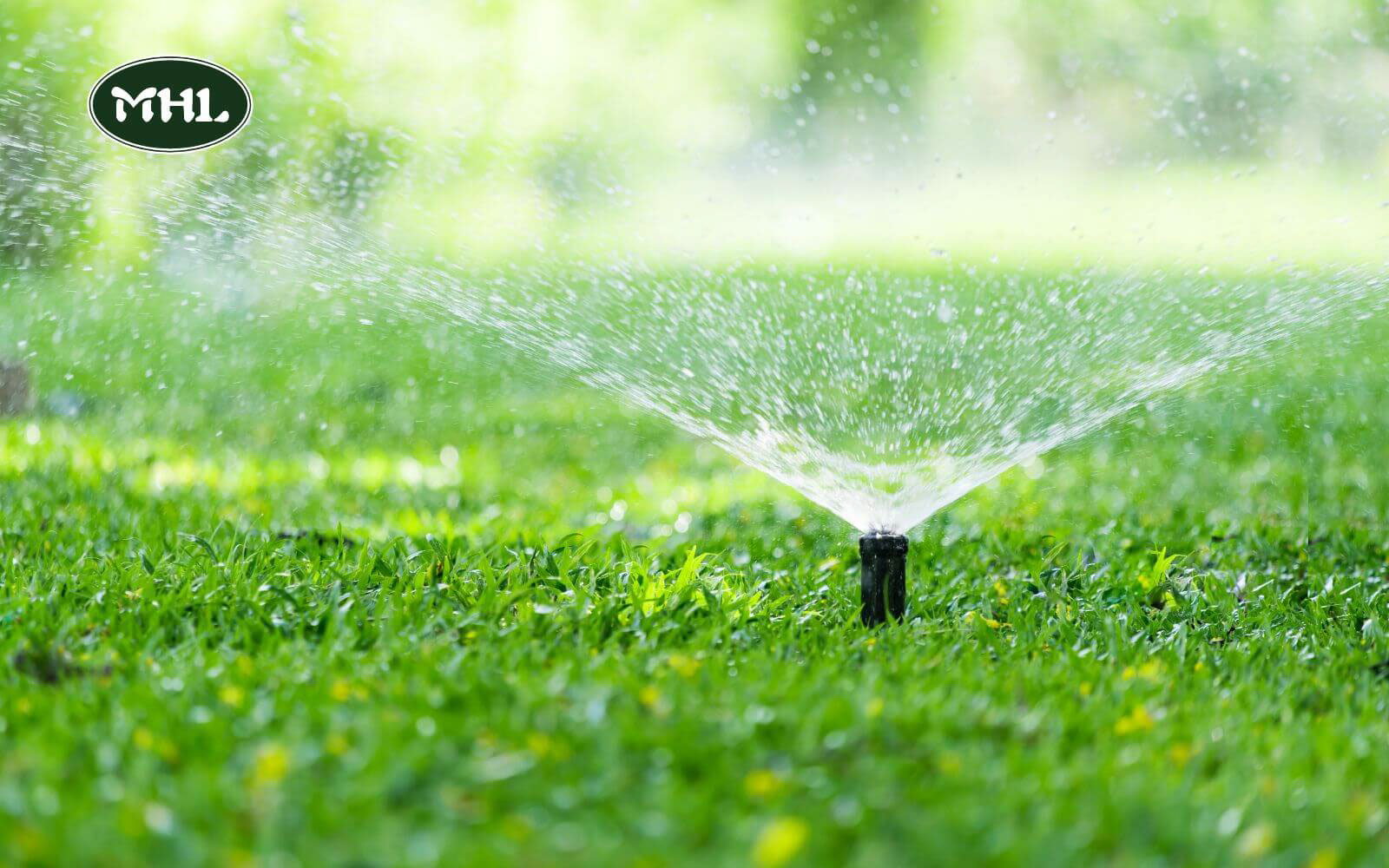
How to install a lawn sprinkler system?
Learning how to install a lawn sprinkler system is simpler than you might think. Many home irrigation kits include everything you need, allowing you to set up a multi-zone system in just two or three days. Here’s an easy-to-follow, 8-step guide to help you install your own lawn sprinkler system.
Step 1: Some tools you need
- Safety gear like eye and ear protection, plus work gloves.
- Marking tools like stakes, flags, or spray paint to outline the trenches.
- An in-ground sprinkler system kit, which comes with sprinkler heads and necessary hardware.
- A control system to go with your sprinkler setup.
- A trenching machine, which you can rent from a home improvement store.
Step 2: Dig the trenches
Mark the trenches you planned in Step 1 using stakes or flags, starting from the water supply line. Use a trenching machine to dig trenches 8-12 inches deep and around 4 inches wide.
Be sure to measure the depth from the top of the pipe to the soil surface. If you prefer to dig manually, use a square-edged garden spade.
Make sure the trenches are level.
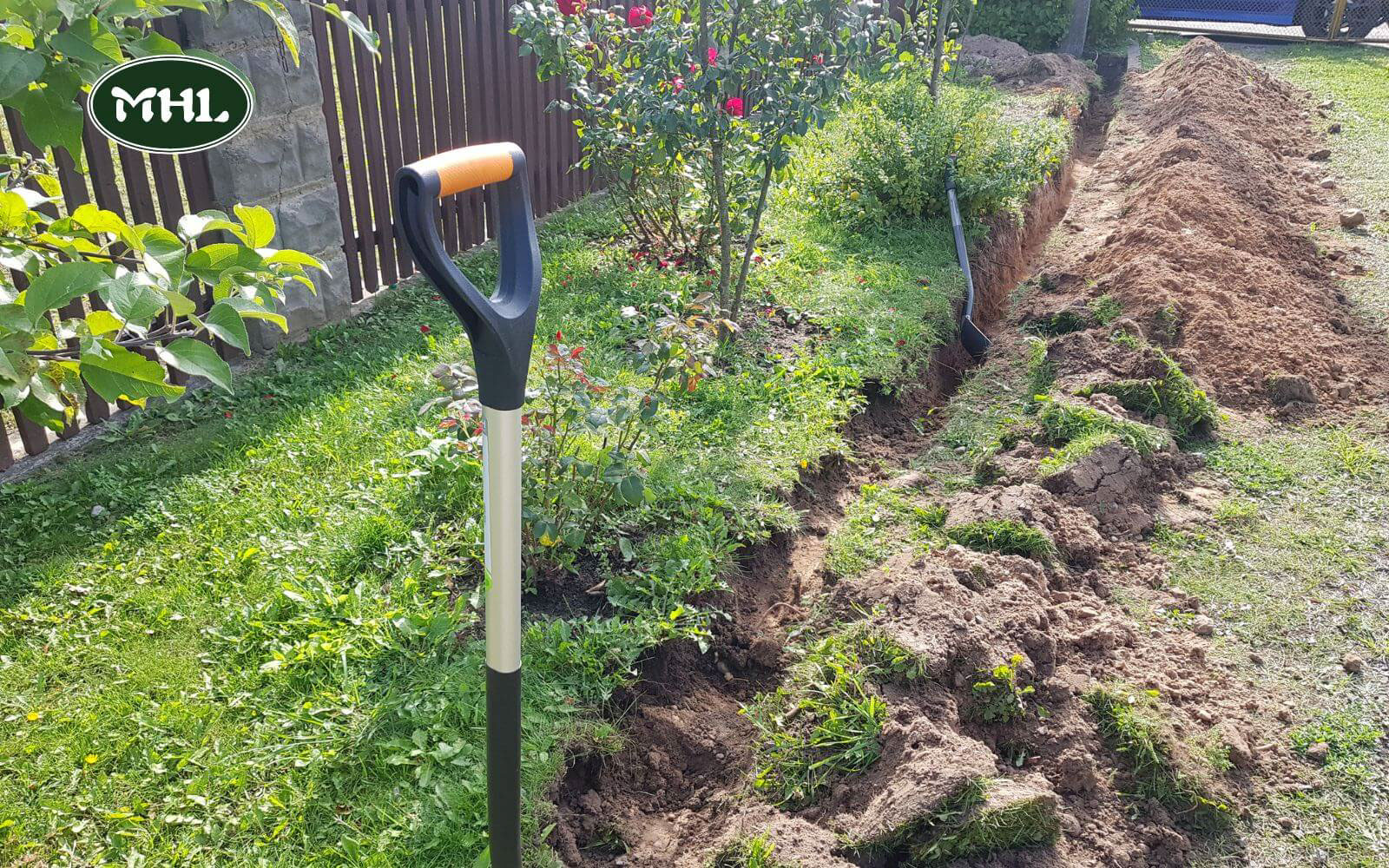
Step 3: Install the valve manifold
Dig a hole slightly larger than the valve manifold. Connect the main water supply to the valve box and secure the clamps tightly. The valve manifold makes it easy to access the valves that control your sprinkler system.
Step 4: Lay the pipes
- Assemble the pipes before placing them in the trenches, starting at the connection point and working outward.
- Use a hacksaw or pipe cutter to cut the PVC pipes, and smooth the edges with a file or knife.
- Connect the pipe to the fitting by marking reference lines for easy alignment.
- After disconnecting the pipe and fitting, clean both surfaces with a solvent and apply cement to the inside of the fitting and the outside of the pipe.
- Reconnect the pipe and fit the reference marks about a quarter turn apart, then twist them to align the marks, ensuring the cement is evenly spread.
- Work quickly, as the cement starts to set in about 30 seconds. After it sets, the parts will be permanently bonded and can’t be separated.
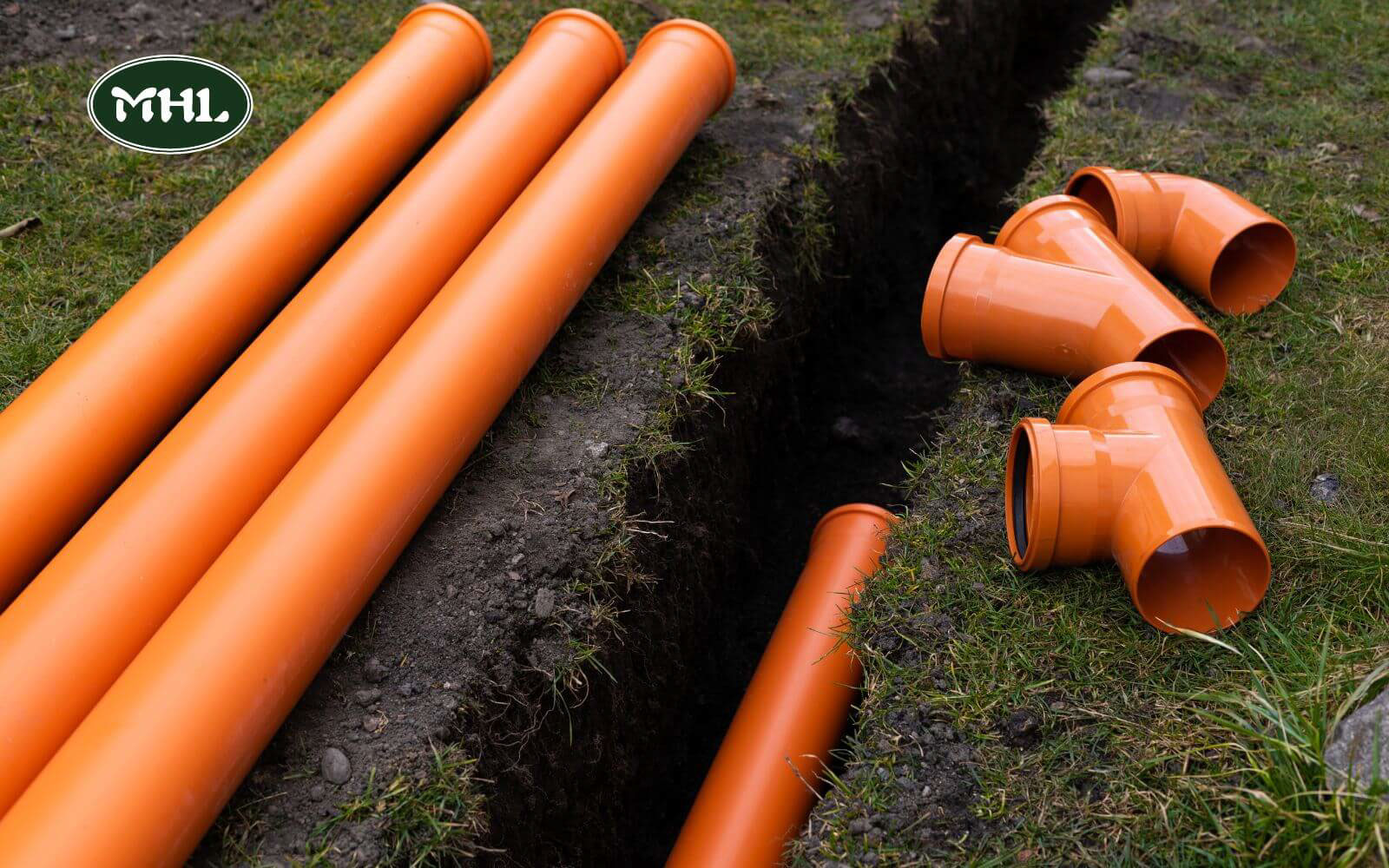
Step 5: Install the sprinkler heads
Attach each sprinkler head to the piping using a riser, placing them as indicated on your irrigation map to ensure full lawn coverage.
Step 6: Connect the water
Most systems connect to an exterior water supply, similar to attaching a garden hose to an outdoor valve. You can also use a well or alternative water source to reduce costs.
- First, shut off the water at the meter.
- Cut into the main line and install a compression tee fitting to control water flow. Ensure all joints are tightly sealed.
- If you’re unsure, consider hiring a plumber for this step since cutting into the main water line can be challenging.

Step 7: Install the timer and control system
A programmable timer will automate your watering schedule, saving water and money.
- Mount the timer on your house (preferably in the garage) and connect the wires from the zone valves to the system box. Follow the manufacturer’s instructions carefully.
- Hiring an electrician may be helpful for this step.
Step 8: Test the sprinkler and bury the pipes
Before covering the trenches, turn on the system to check for leaks or loose connections. Once everything looks secure, turn off the system and fill in the trenches. You may want to plant grass seed to restore your lawn.
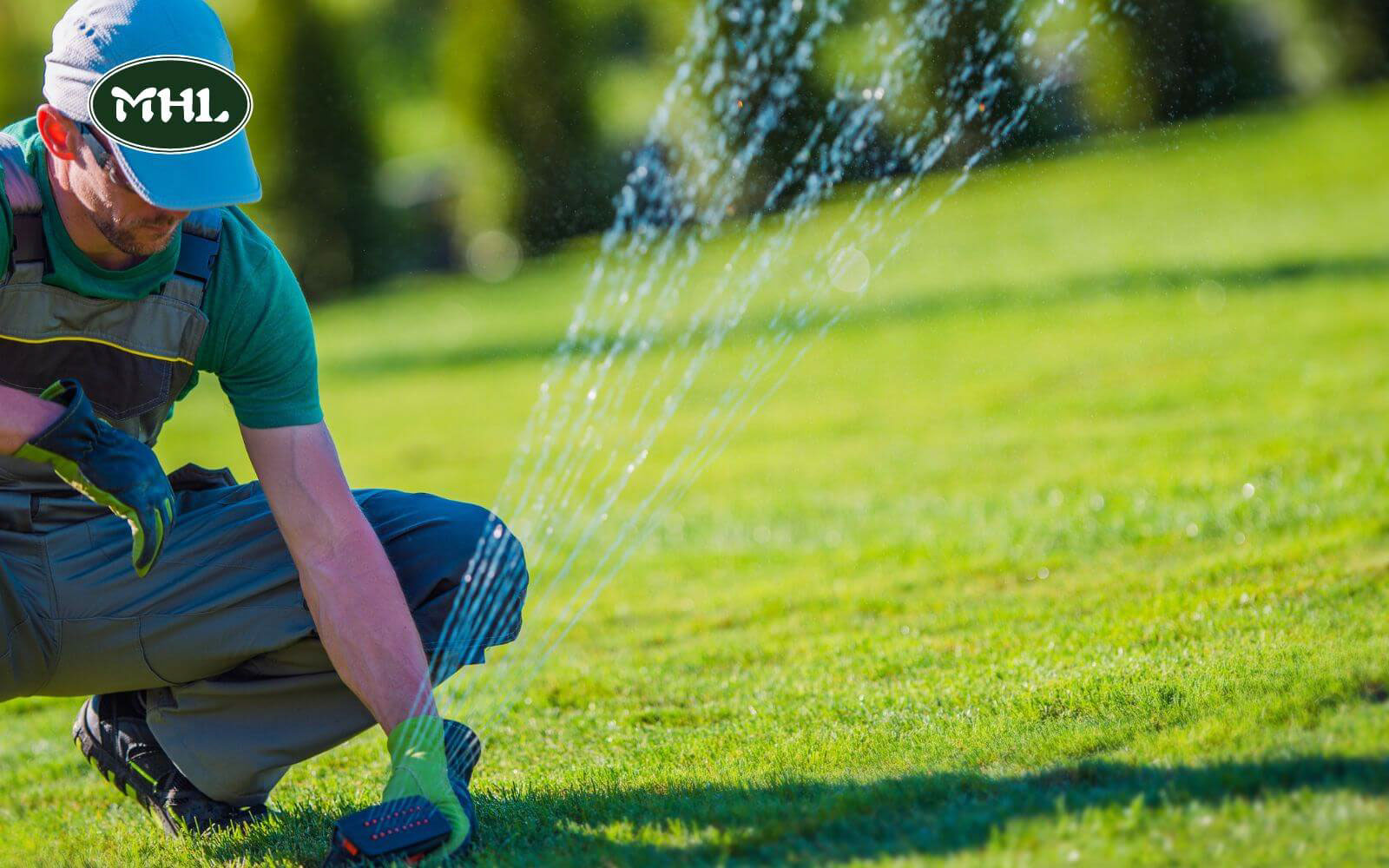
Follow Mile High Lifescape’s simple 8-step guide about how to install a lawn sprinkler system and create a lush, water-efficient landscape. With careful planning and the right steps, you can enjoy the ease of automated irrigation and a beautiful, vibrant lawn that conserves water and enhances your home’s curb appeal.
Contact us:
Address: 1427 S Federal Blvd, Denver, CO 80219
Hotline: +1 (720) 301-3335
Email: [email protected]
Reference
1. How to Install an In-Ground Lawn Sprinkler System. Available at: https://lawnlove.com/blog/how-to-install-a-lawn-sprinkler-system/
2. How Does A Sprinkler System Work? Available at: https://www.lawnman.net/blog/how-does-a-sprinkler-system-work/
3. How to Install an Underground Sprinkler System. Available at: https://www.lowes.com/n/how-to/install-an-underground-sprinkler-system
4. How to Plan Your Automatic Sprinkler System. Available at: https://www.rainbird.com/homeowners/blog/planning-a-drip-irrigation-system
5. How to Plan and Install a Home Lawn Sprinkler System. Available at: https://www.lawnstarter.com/blog/lawn-care-2/how-plan-install-home-lawn-sprinkler-system/
